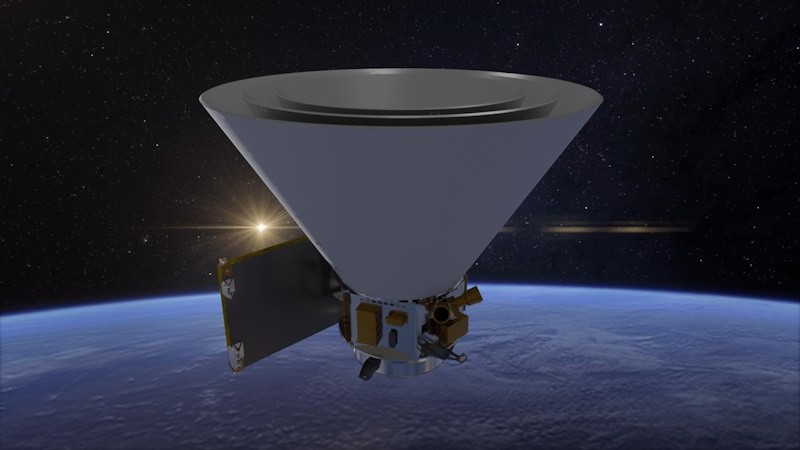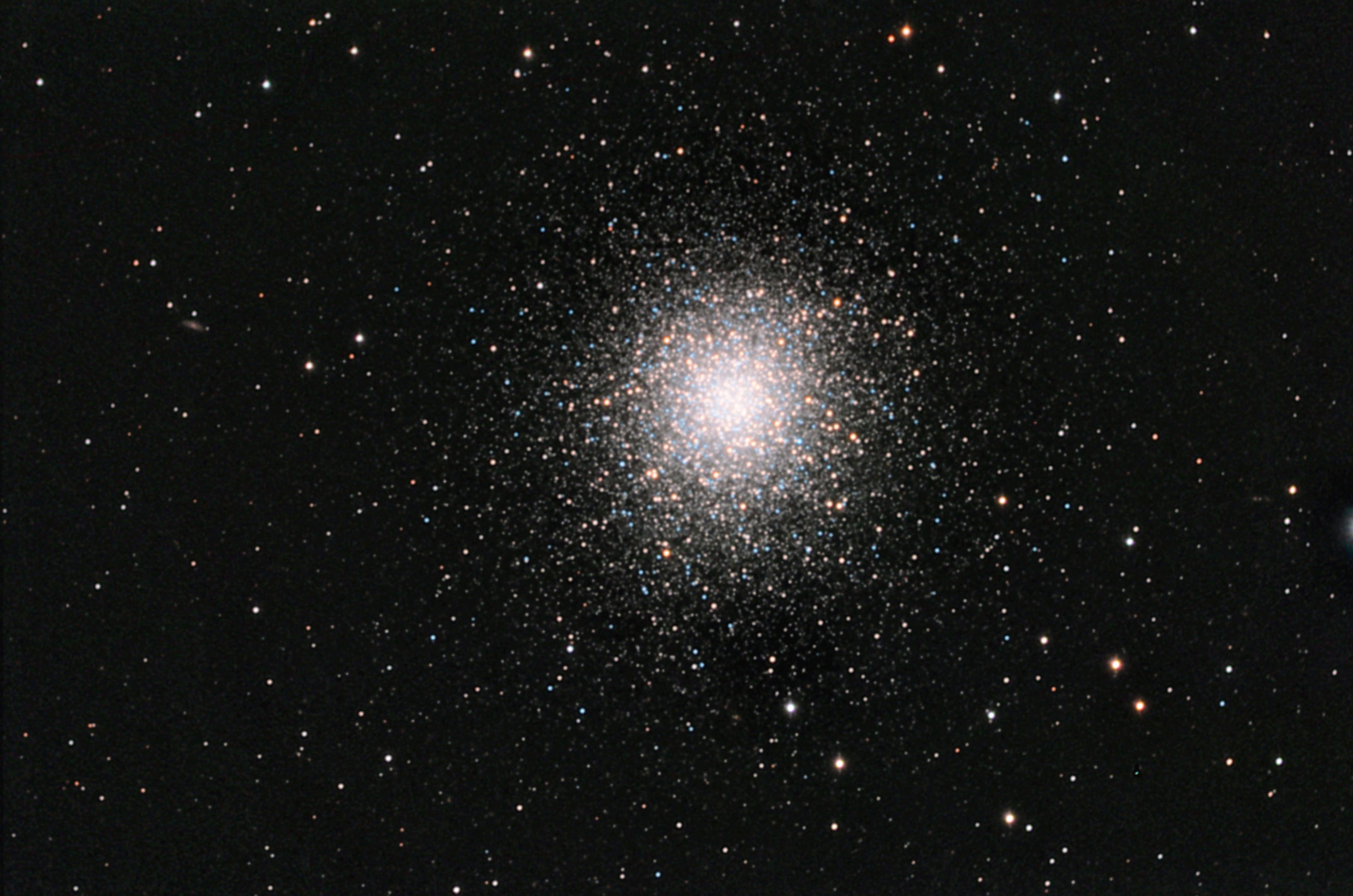NASA’s SPHEREx Space Telescope to Launch Soon

Shaped like a megaphone, the upcoming SPHEREx mission will map the entire sky in infrared light to answer big questions about the universe. Expected to launch during the first half of this year from Vandenberg Space Force Base in California, NASA’s SPHEREx space telescope will provide astronomers with a big-picture view of the cosmos like none before by creating an all-sky spectral survey. Over its two-year planned mission, SPHEREx will collect data on more than 450 million galaxies and more than 100 million stars in the Milky Way. SPHEREx will map the entire celestial sky in 102 infrared colors to learn more about the origins of our universe, the galaxies within it, and life’s key ingredients in our own galaxy. (Image Credit: NASA)
NASA’s SPHEREx Space Telescope to Launch Soon
NASA’s latest space telescope, SPHEREx, will map the universe like none before it, providing a big-picture view that will illuminate the origins of our universe, galaxies within it, and life’s key ingredients in our own galaxy. Short for Spectro-Photometer for the History of the Universe, Epoch of Reionization and Ices Explorer, SPHEREx will observe hundreds of millions of galaxies and other objects during its two-year mission, mapping the cosmos in wavelengths invisible to the human eye. The mission is targeting an early 2025 launch from Vandenberg Space Force Base in California. SPHEREx is managed by NASA’s Jet Propulsion Laboratory in Southern California for NASA’s Astrophysics Division within the Science Mission Directorate in Washington -- The principal investigator is based at Caltech in Pasadena, California, which manages JPL for NASA.
Space telescopes like NASA’s Hubble and Webb have zoomed in on many corners of the universe to show us planets, stars, and galaxies in high resolution. But some questions can be answered only by looking at the big picture. Using 102 color filters to map the entire sky, what new discoveries could SPHEREx help unlock? Here are eight key facts about the mission.
1. The SPHEREx mission will help answer some of the biggest questions in astrophysics.
The mission contributes to NASA’s key scientific goals to discover the secrets of the universe and search for life beyond Earth. Its all-sky map will help scientists answer major questions about why the large-scale structure of the universe looks the way it does, how galaxies form and evolve, and the origins and abundance of water and other key ingredients for life in our galaxy.
2. It adds unique strengths to NASA’s fleet of space telescopes.
The mission’s ability to scan the entire sky quickly and gather data on billions of stars and galaxies complements the work of more targeted telescopes, like NASA’s Hubble and Webb space telescopes. While those telescopes can provide a more detailed look at a given target, survey telescopes like SPHEREx provide broader context and search for trends across entire categories of objects, including stars and galaxies.
3. This observatory will make the most colorful all-sky map ever.
It “sees” in the infrared range, which consists of wavelengths the human eye can’t detect. Using a technique called spectroscopy, the telescope splits light into 102 colors (individual wavelengths) like a prism creates a rainbow from sunlight. This enables it to detect evidence of chemical compounds and molecules, each of which has a unique signature in the colors it absorbs and emits. Spectroscopy can also help scientists measure how far away objects are, making it ideal for studying distant galaxies and mapping their locations in 3D.
4. The mission will shed light on a cosmic phenomenon called inflation that took place less than a second after the big bang.
Less than one second after the big bang — the first billionth of a trillionth of a trillionth of a second, to be precise — space itself increased in size by a trillion-trillionfold. The SPHEREx mission will help scientists understand the physics that drove this nearly instantaneous event, called inflation. Small differences in the distribution of matter were amplified by inflation, influencing the large-scale structure of the universe today. The SPHEREx observatory will measure the distribution of hundreds of millions of galaxies to help scientists understand what drove inflation and to improve our understanding of the physics behind this extreme cosmic event.
5. It will measure the collective glow from galaxies near and far, including hidden galaxies that have not been individually observed.
Scientists have tried to estimate the total light output from all galaxies throughout cosmic history by observing individual galaxies and extrapolating to the trillions of galaxies in the universe. The SPHEREx space telescope will measure the total glow from all galaxies, including galaxies that are too small or too distant for other telescopes to easily detect. This will give scientists a more complete picture of all the objects and sources radiating in the universe.
6. The mission will search the Milky Way galaxy for essential building blocks of life.
Life as we know it wouldn’t exist without basic ingredients such as water and carbon dioxide. The SPHEREx observatory is designed to find these molecules frozen in interstellar clouds where stars and planets form. The mission will help scientists discover the location and abundance of these icy compounds in our galaxy, giving them a better sense of how likely they are to be incorporated into newly forming planets.
7. The observatory stays cold thanks to its unique cone-shaped design.
The mission’s telescope and detectors need to operate around minus 350 degrees Fahrenheit (about minus 210 degrees Celsius); otherwise, they will generate their own infrared glow that might overwhelm the faint light from cosmic sources. SPHEREx relies on an entirely passive cooling system — no electricity or coolants are used, simplifying the spacecraft’s design and operational needs. Key components of this system include three cone-shaped photon shields to protect the telescope from the heat of Earth and the Sun, as well as a mirrored structure beneath the shields to direct heat from the instrument out into space.
8. The all-sky map generated by SPHEREx will be freely available to scientists around the world.
The mission will generate a new encyclopedia of information about hundreds of millions of celestial objects — including stars, galaxies, and even asteroids in our own solar system — most of which haven’t been studied with spectroscopy before. Researchers will be able to access this mission’s massive treasure trove of new cosmic data from anywhere on the globe.
SPHEREx is managed by NASA’s Jet Propulsion Laboratory for the agency’s Astrophysics Division within the Science Mission Directorate at NASA Headquarters in Washington. BAE Systems (formerly Ball Aerospace) built the telescope and the spacecraft bus. The science analysis of the SPHEREx data will be conducted by a team of scientists located at 10 institutions in the U.S., two in South Korea, and one in Taiwan. Data will be processed and archived at IPAC at Caltech, which manages JPL for NASA. The mission principal investigator is based at Caltech with a joint JPL appointment. The SPHEREx dataset will be publicly available at the NASA/IPAC Infrared Science Archive.
For more information:
https://www.jpl.nasa.gov/press-kits/spherex/
https://science.nasa.gov/mission/spherex/stories/
https://www.jpl.nasa.gov/missions/spherex/
Astromart News Archives:
https://www.astromart.com/news/search?category_id=3&q=.
This is my personal deep sky observing list. I use it to line up my DSO targets on any particular night:
Check out some of my favorite Words of Wisdom:
https://www.astromart.com/news/show/words-of-wisdom-some-are-deep-others-not-so-much
https://www.astromart.com/news/show/words-of-wisdom-my-favorite-proverbs-from-around-the-world
Do you enjoy reading these postings?
Then click here and buy the Astromart crew a cup of coffee (and maybe even some donuts):
https://www.astromart.com/support-options
Funding Member
Sponsors
- Waite Research
- SellTelescopes.com
- RemoteSkies.net
- APM-Telescopes
- Rouz Astro
- BW
- Astromart Customer Service
- astronomy-shoppe
- AstroMart LLC
- Matsumoto Company
- BBLABS LLC
- ASTROPHOTOGRAPHY BY MARTIN PUGH
- FocusKnobs
- Bob's Knobs
- Anacortes Telescope
- Desert Sky Astro Products
- OMI OPTICS USA LLC
View all sponsors



